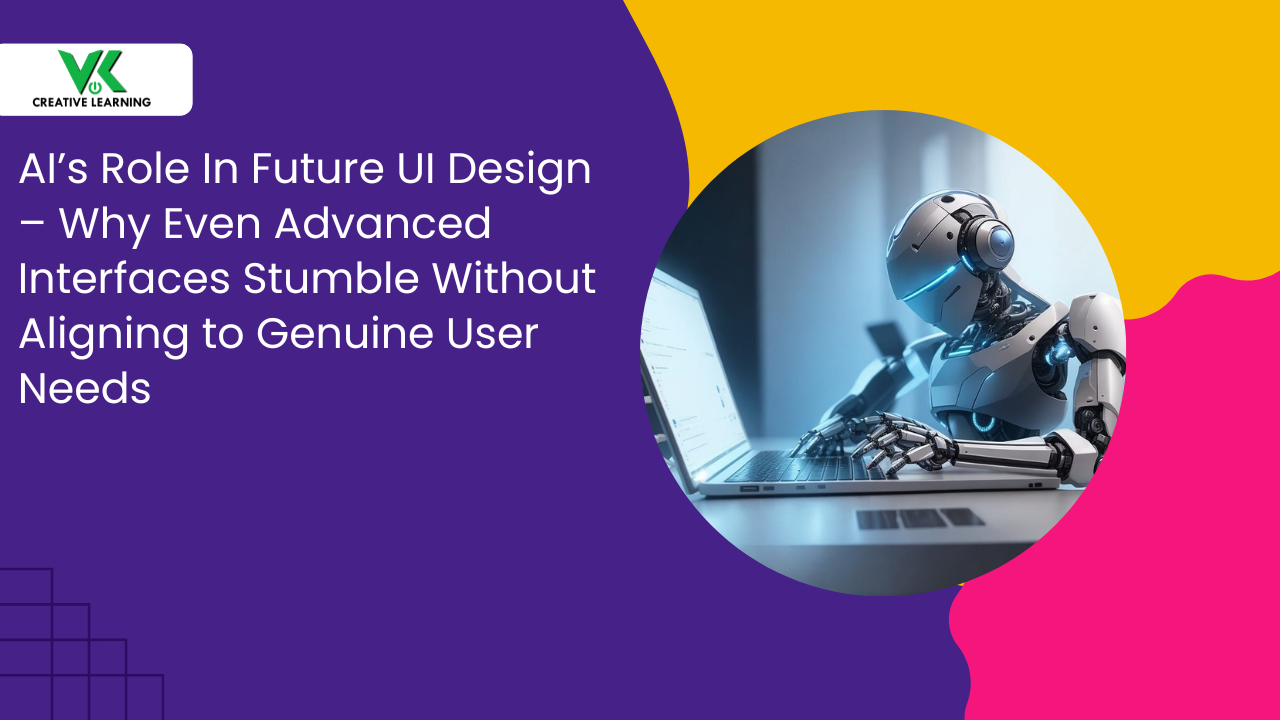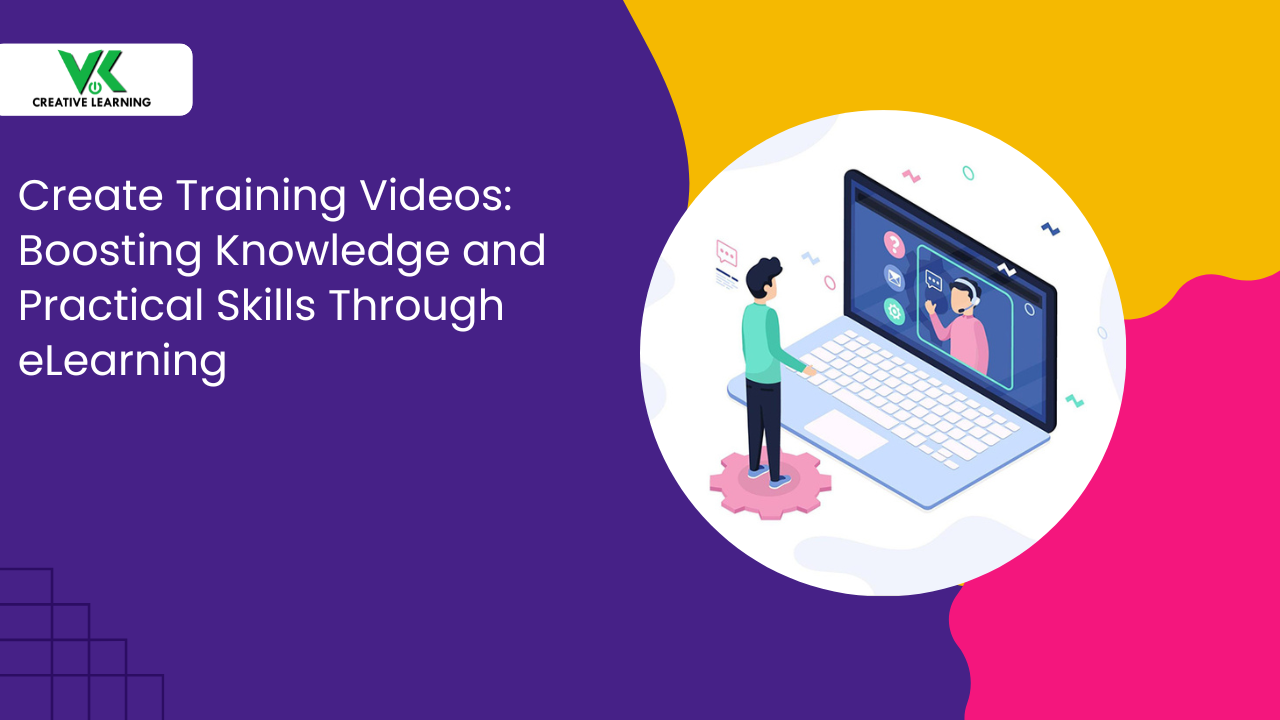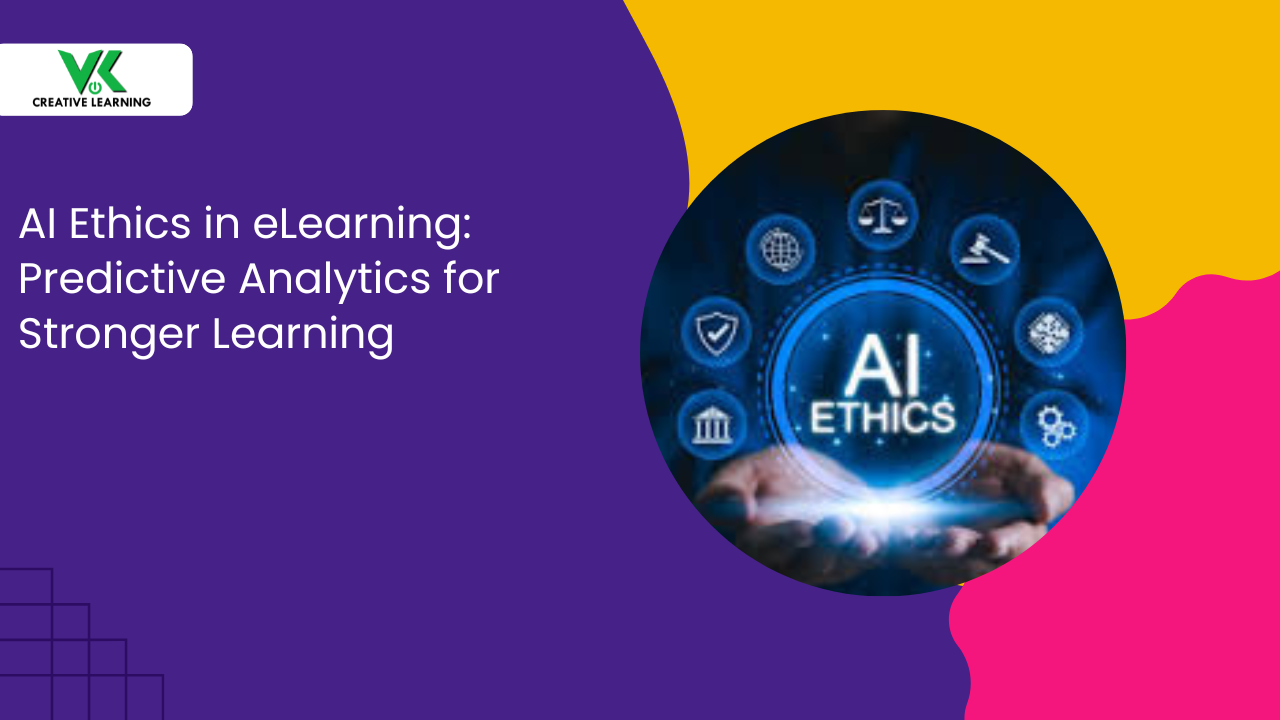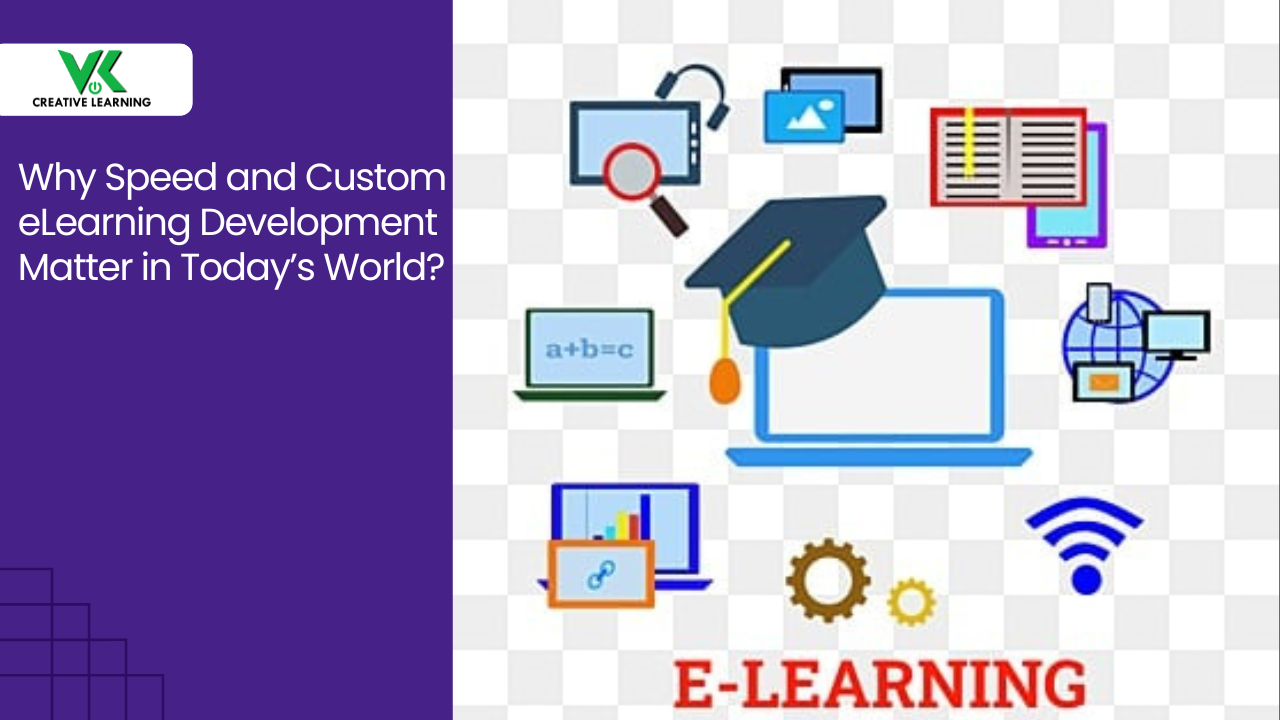AI in Corporate Learning: How AI-Based eLearning Can Expedite Workforce Upskilling
October 07, 2025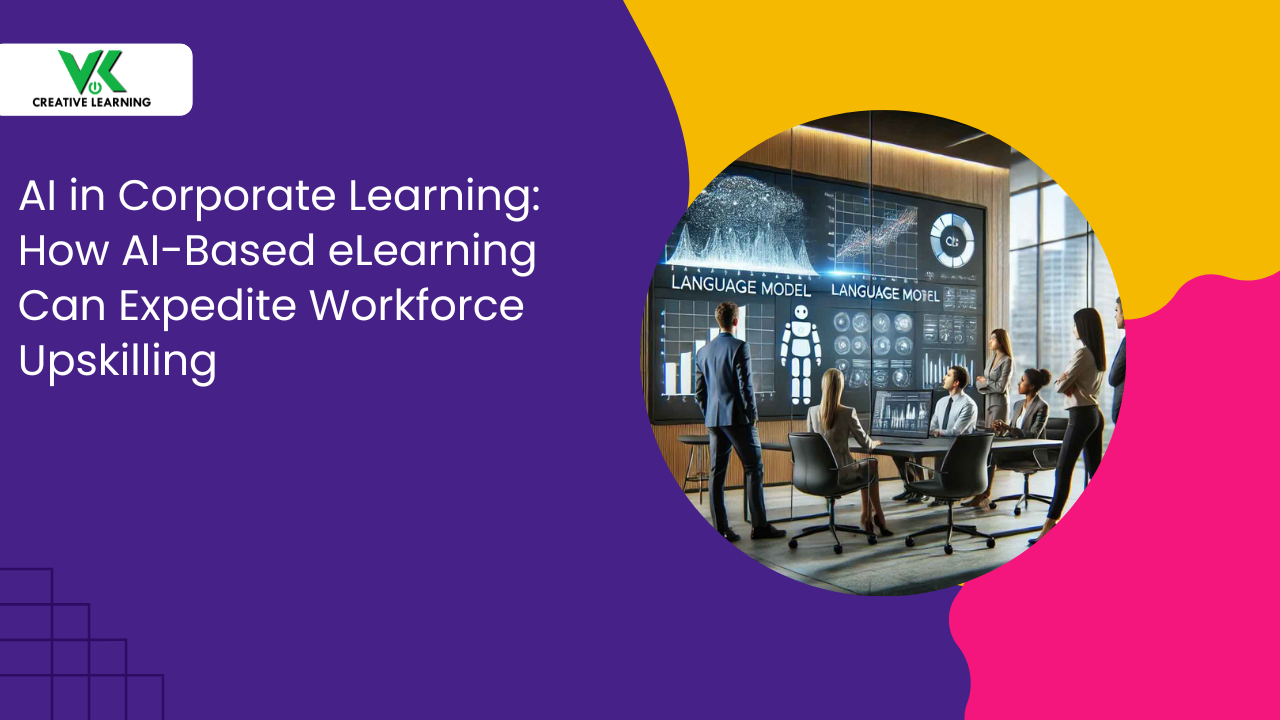
Companies are facing quick changes in many ways. Hence, the use of Artificial Intelligence (AI) in corporate training is reshaping employees' acquisition of new knowledge. Also, this is useful considering the industries' shift and new surfacing technologies.
Thus, it goes without saying that employees must adapt at a breakneck pace. Through AI in corporate eLearning, firms can help employees with bespoke learning upskilling. This type of training can not only close enterprise skill gaps but also keep employees relevant in the marketplace.
Example: imagine a corporate employee who needs training on newly arrived digital tools. Corporate AI-based eLearning can offer contextual lessons on demand to employees.
Table of Contents:
- Understanding AI’s Role in Workforce Upskilling
- Bridging Gaps Through AI Strategies in eLearning
- Practical Perks of AI-Powered Corporate Learning
- The On-the-Job Learning Revolution
- Integrating AI with Platforms for Scale
- Daily Life Cases: AI as a Subtle Workplace Mentor
- Real-World Applications Across Industries
- Context-Specific Examples
- The Human-AI Collaboration in Corporate Training
- Challenges Overview: Adopting AI in Learning Environments
- Future Possibilities: AI as Continuous Corporate Guide
- Conclusion: AI in Corporate Learning--the Future
Understanding AI’s Role in Workforce Upskilling
AI in corporate learning works like an adaptive-learning system and adapts as per learners' needs. This means that it does not merely automate content delivery but also actively analyzes workforce learning needs completely.
Based on various learning analyses, AI eLearning recommends suitable modules for various types of learners. Importantly, it tracks how much growth of knowledge absorption has taken place in learners. In essence, AI suggests personalization for corporate learning at scale--something that traditional programs may not provide.
Take the example of a situation of a marketing executive who needs advanced analytics skills in regards to understanding of concepts. Accordingly, AI can recommend quick, practical learning snippets for learners. These modules are tailored to current projects, rather than generic training sessions--not only text-based modules.
This responsive approach ensures employees gain skills aligned with immediate goals, making learning deeply purposeful.
Bridging Gaps Through AI Strategies in eLearning
Inevitably, every organisation has a hard time when it comes to closing enterprise skill gaps (as a result of ever-shifting challenges). In such scenarios, roles evolve faster than employees can understand and keep synced with. Thus, as a result, managers often struggle to pinpoint deficiencies.
AI in corporate learning serves as a skill-mapping and forecasting instrument for learners in multiple ways. Importantly, it diagnoses the abilities of the individuals, predicts their shortfalls, and accordingly, recommends remedies for employees.
Consider a situation wherein a bank faces a cybersecurity challenge. Thus, instead of applying a vast, company-wide seminar, AI eLearning smartly zeroes in on vulnerable teams. The system then delivers specific, focused modules that offer a targeted approach. This helps to quicken outcomes, close enterprise skill gaps, and upskill trainees when required.
Practical Perks of AI-Powered Corporate Learning
The advantages of integrating AI with eLearning platforms go way beyond saving time for the workforce as well as firms. In fact, AI-driven eLearning provides ideas to create easily understandable short modules.
This turns into learner-centric design, aiding in the prevention of extra mental fatigue. Importantly, employees in a corporation can pick up new knowledge on the go an eLearning platform renders swift knowledge resources.
Hence, trainees as well as experienced employees can learn during their travelling journeys, during breaks, or even during projects. This way productivity of the working people is never sacrificed, nor slowed down.
Example: Suppose that a company uses an AI system and the system assesses individuals' existing knowledge. Trusted AI learning solution providers develop an eLearning platform such that the system ensures data privacy.
Also, instead of a long course, the AI gives trainees a quick, ten-minute video. The video explains the basics and gives them a short quiz. This way, learners learn what they need, right when they need it. Also, through custom eLearning, training becomes personal.
Think of David, a senior employee and learning, adopting new financial software. The AI system notices David's team isn't using a key feature. The system sends him a short 2D or 3D video animation tutorial on various situations, showing him how to use the software.
The On-the-Job Learning Revolution
Consider employees in the field who don't have the knowledge to fix certain problems. They can access visual animations of a instructor setting up a work process. This can only be possible with AI-guided simulations in an eLearning platform. This training is not theoretical, but practical too--tied to the work tasks themselves. AI transforms learning from a separate task. It becomes an everyday work companion.
Integrating AI with Platforms for Scale
It is also very important to note that joining AI with learning systems can be looked upon as a cloud-enabled infrastructure. Such systems in place can ensure training happens on time and employees grow with the company.
Also, such a platform allows big companies to give consistent training across different regions. Importantly, AI-driven platforms can adjust content for local needs while still keeping central goals in place.
Think of a global chain of stores. They are bringing in AI-curated training for customer service. Headquarters provides the main rules, yet the AI makes sure to include regional details. These include things like local customs and language--a perfect blend of global design and local flavor. These methods enable learning to become contextually connected for learners.
Daily Life Cases: AI as a Subtle Workplace Mentor
AI in corporate learning can be used to work as a highly attentive and proactive guide for learners of different types. Think of it like a navigation app redirecting drivers to a less jammed path in case of traffic. So in the same way, AI redirects employees toward better learning routes.
The parallel capability of AI in corporate learning makes the concept quite tangible for knowledge seekers.
Example: suppose sales executives are missing deadlines owing to less knowledge of current market needs. In such scenarios, they could receive an AI-suggested negotiation module that eases their learning. Elaborately put, the AI-based eLearning smartly finds out where exactly they require assistance in learning. Then, it recalculates a faster route learning and suggests modules that could ease their knowledge acquisition. Similarly, a designer with outdated methods could be nudged toward creative workshops. The learning feels less imposed; it seems more like timely support.
Real-World Applications Across Industries
AI in corporate training has diverse applications for employees in different departments. A sales member could receive AI-curated simulations during sales downtime. The modules are suggested so as to prepare them for unexpected flight scenarios--dealing with tough customers.
A newly joined employee could get AI tips for customer service improvements through sales eLearning courses. These examples show how to instantly sharpen performance. These applications are practical—that is, based on real workplace scenarios. Hence, AI-based eLearning makes a lasting and concrete difference among learners.
Context-Specific Examples
Imagine a sales trainee named Emily who is struggling with the newly launched software. That is, she is tasked with the job role of using a new CRM tool. The AI system, through training sessions, notices that she is spending too much time on data entry.
Hence, it analyzes the situation and suggests a 5-minute video (microlearning modules) on keyboard shortcuts. This small tip saves her an hour each week. She feels supported, not micromanaged.
Now, consider another example: Robert is an experienced project manager, and suddenly, his company thinks of shifting to an agile methodology. The AI system, through multiple training sessions, tracks his existing progress. It quickly determines that he is struggling with a new reporting format.
The system sends him a link to a short, interactive simulation--can be customized to 2D and 3D versions. He practices the new format in a risk-free environment. He then applies it to his real projects and swiftly learns without any need for any person's help.
The Human-AI Collaboration in Corporate Training
AI is not there to replace trainers for sure, as it would be better if it worked alongside them. One distinguishing factor is that human mentors offer empathy and situational knowledge. These nuanced aspects are difficult to replicate by an AI system at the present time.
How AI can make learning better is by giving a grand scale of knowledge to the learners with the best possible precision content. Together, human and AI in cooperative learning will form a purpose-built-balanced understanding model.
Think of a leadership workshop wherein AI takes the role of handling all the assessments. After checking the employees' work, it suggests personal resources. Meanwhile, a human trainer does the work of setting up the group conversations and guiding them. This kind of combined approach turns out to be highly efficient and will not sacrifice the human touch. That human touch, essential for corporate learning, will be supplemented with the right direction and upskilling resources.
Challenges Overview: Adopting AI in Learning Environments
Challenges, however, do remain with AI in use for employee training purposes. Companies face employee problems--that is, fear of automation or data misuse.
Some employees fear disproportionate dependence upon AI, eroding human (people-first-outcome-driven) judgment. Addressing such concerns demands clear dialogue among learners and leadership; trust follows.
Hence, as a solution, companies should pilot modest AI tools with experience-rich and trusted AI learning solution providers first. Begin with AI that monitors routine progress aligned to role-specific [task-focused] objectives. Gradually introduce sophisticated modules as capability and confidence increase; adoption deepens.
Employees then observe tangible [evidence-backed] benefits: faster reinforcement. Also, clearer feedback loops, measurable gains. This progression mitigates risks from erroneous inputs; humans retain final [deliberate-judgment-preserving] authority. Human [judgment-centered] intervention comes at the right time with expected outcomes.
Future Possibilities: AI as Continuous Corporate Guide
The coming years, for workplace learning, brim with unexpected results. Before roles require them, AI may predict skills; predictive systems emerge. With such reshaping training, firms have the needed tool to plan programs in advance.
Imagine a weekly note from AI in corporate learning that tells an employee their upcoming skill needs. The note could suggest short courses on some topics. Otherwise, it would be practical tasks related to their roles in the workplace.
Example: New analysts learn the analysis of the market, customer handling, or newly introduced services faster. Courtesy: through guided practice by both the instructor and AI-eLearning.
Conclusion: AI in Corporate Learning--the Future
AI in corporate learning can aid firms to cater adaptive and learner-centric training. These programs can be scalable training solutions irrespective of any location. Importantly, it would assist companies in closing enterprise skill gaps. Additionally, gradually, firms start witnessing measurable performance improvements.
Also, trusted eLearning creators such as VK Creative Learning (VKCL) can integrate AI-based learning with existing platforms.
By doing so, employees receive timely, relevant learning for employees. This would align with learners' career goals, aspirations. Ethics and oversight ensure decisions stay human-centered. Also, it ensures regular checks to prevent algorithm errors.
Also, VKCL brings into play global-standard quality measures during eLearning solution development. They serve every business firm; every single industry. They hold fast to eLearning-framework standards--stringent ones to offer a diverse service range, given hereunder.
